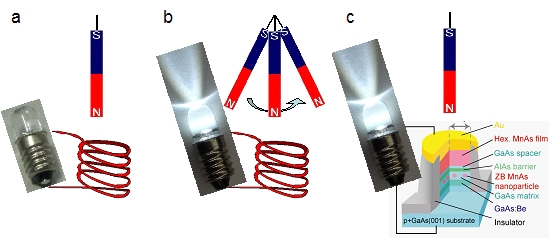Theory of Solid State Physics group (Prof. Maekawa's group) has realized, in collaboration with University of Tokyo and University of Miami, a “spin-motive force” (smf), a novel mechanism to drive electrical currents due to static magnetic fields. The existence of smfs was theoretically predicted by Prof. Maekawa and coworkers several years ago and which is now proved experimentally by using magnetic tunnel junctions with ferromagnetic nanoparticles. This finding has renewed Faraday’s law of electromagnetic induction, a fundamental law of physics, after almost 180 years. Due to the smf more than 100,000 % huge magnetoresistance (1000 times larger than existing technology) was achieved. The smf offers a very efficient way of conversion between electric and magnetic energies, enabling us to fabricate a new type of spin-batteries and ultra-high-sensitive magnetic sensors. This result was published in Nature on March 8th (online), and also introduced in Nikkan Kogyo on March 9th (Japan time).

Fig. A comparison between conventional Faraday’s law and a spin-motive force. (a) Static magnetic fields cannot induce electromotive forces (emf) in the coil. (b) Emfs are produced when the magnet is set in motion. (c) Spin-motive forces require only static magnetic fields to generate emfs owing to spin dynamics in ferromagnetic nanoparticles.
Prof. Maekawa's Group (Theory of Solid State Physics)
